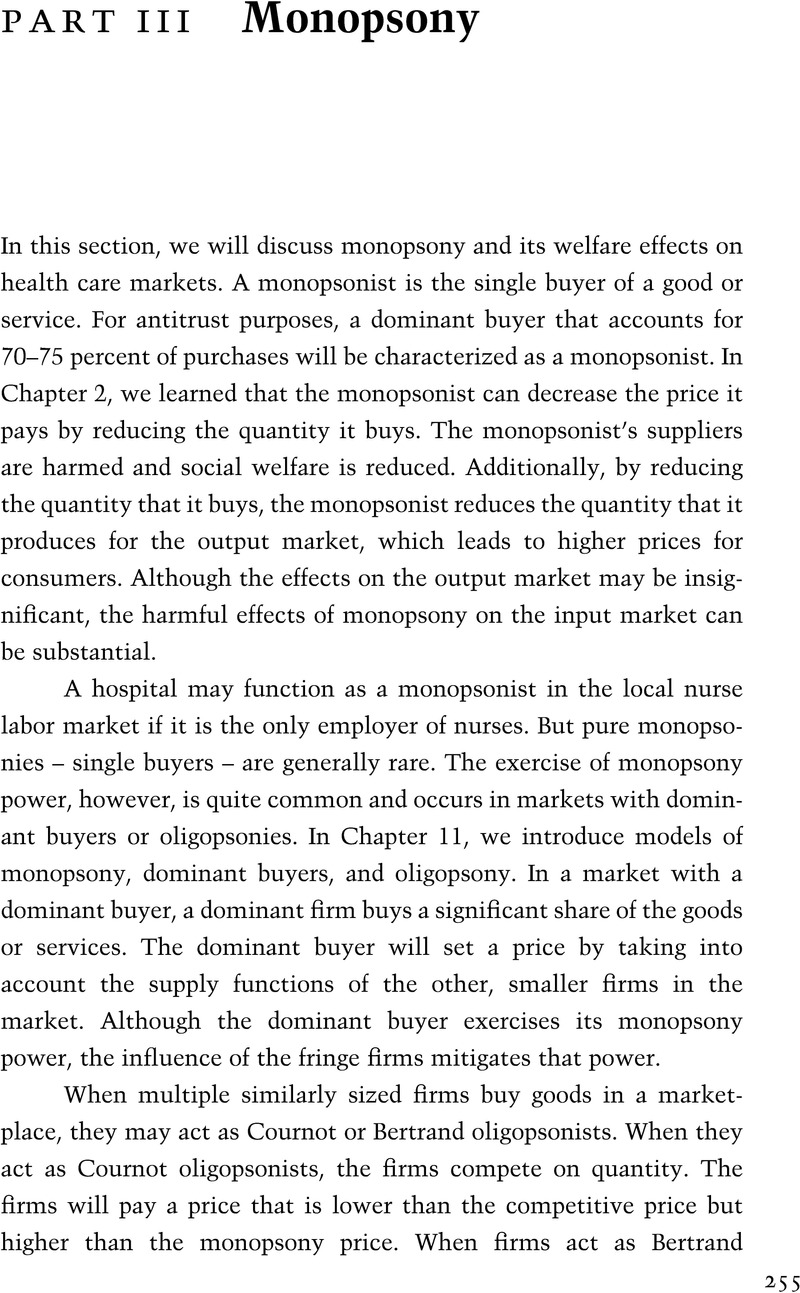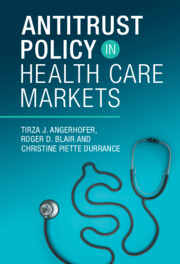Book contents
- Antitrust Policy in Health Care Markets
- Antitrust Policy in Health Care Markets
- Copyright page
- Dedication
- Contents
- Figures
- Tables
- Acknowledgments
- Table of Cases
- 1 Health Care Markets and Competition Policy
- 2 Antitrust Policy in the United States
- Part I Monopoly
- Part II Seller Cartels
- Part III Monopsony
- Part IV Buyer Cartels
- Part V Mergers and Acquisitions
- Index
- References
Part III - Monopsony
Published online by Cambridge University Press: 24 November 2022
- Antitrust Policy in Health Care Markets
- Antitrust Policy in Health Care Markets
- Copyright page
- Dedication
- Contents
- Figures
- Tables
- Acknowledgments
- Table of Cases
- 1 Health Care Markets and Competition Policy
- 2 Antitrust Policy in the United States
- Part I Monopoly
- Part II Seller Cartels
- Part III Monopsony
- Part IV Buyer Cartels
- Part V Mergers and Acquisitions
- Index
- References
Summary

- Type
- Chapter
- Information
- Antitrust Policy in Health Care Markets , pp. 255 - 322Publisher: Cambridge University PressPrint publication year: 2022

